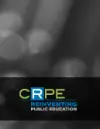Many state education leaders are taking a fresh look at their school finance formulas in hopes of finding ways to contain costs and get more for their dollar.
Some are searching for efficiencies by reworking transportation formulas, or zeroing in on special education eligibility, or pushing to merge districts so as to contain costs. Others are seeking to improve productivity and are restructuring their formulas to invest more in digital learning, charter innovations, and information systems.
But many are overlooking a common state formula practice that inhibits both efficiency and productivity; namely, the practice of funding students who do not actually attend school in funded districts, or “phantom students.”
This working paper describes the typical operational relationship between expenditures and revenues in districts to set the stage for how state allocations affect spending behavior in districts. The authors describe the policies funding phantom students, the rationale, and the expense. They also highlight the ways in which the allocation is driving up costs and inhibiting more adaptive, productive spending choices. Finally, they suggest some practical policies states might adopt to help districts deal with enrollment fluctuations while not creating rewards for small or declining enrollment districts.
This paper is part of the George W. Bush Institute’s School Productivity Project papers, and will be published as part of an edited volume (forthcoming 2013).





